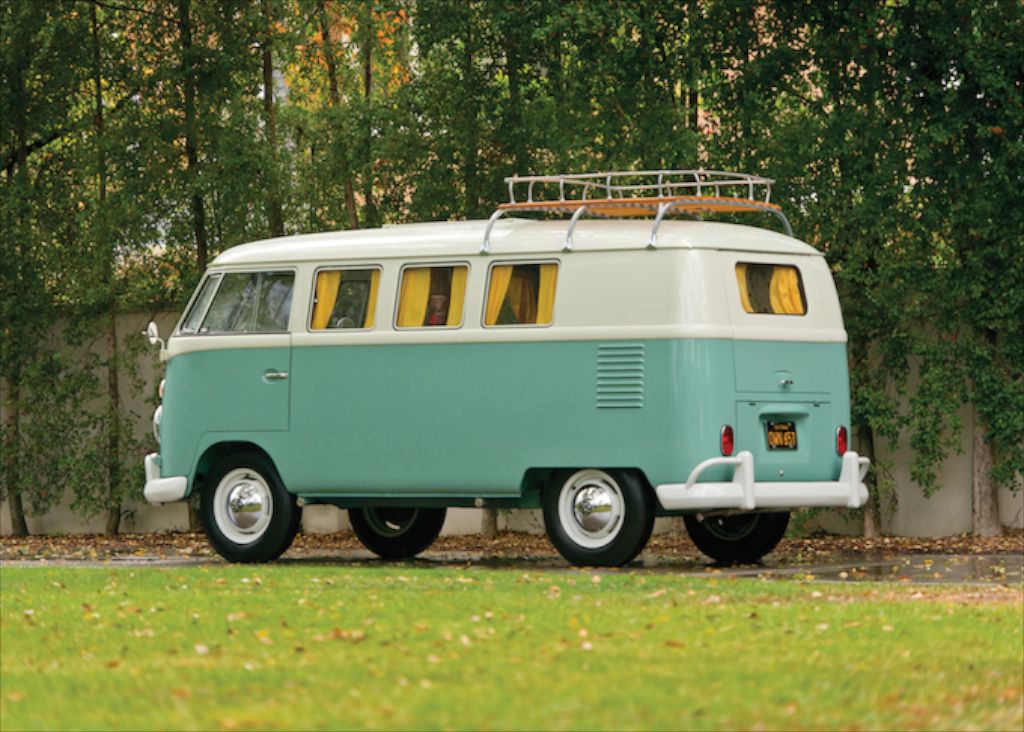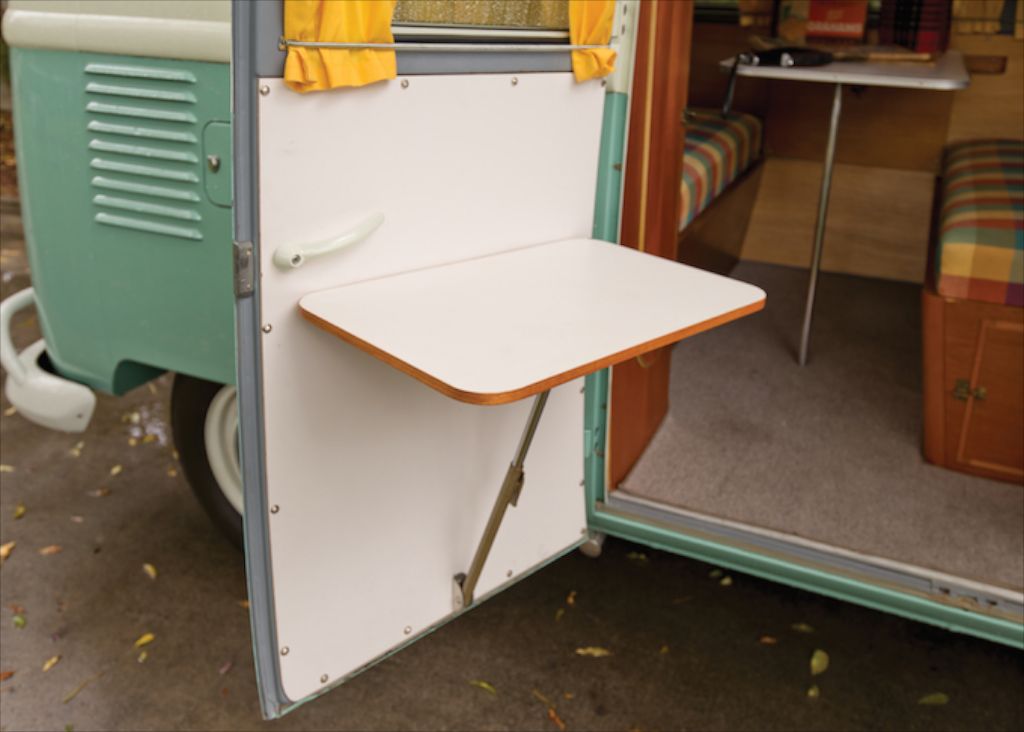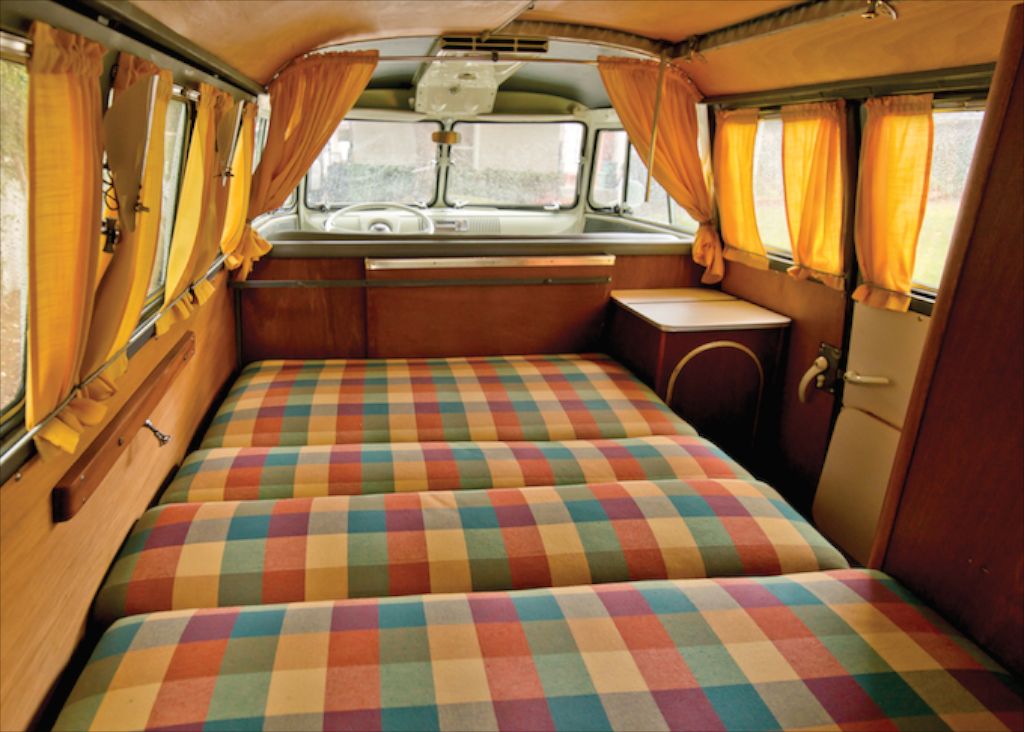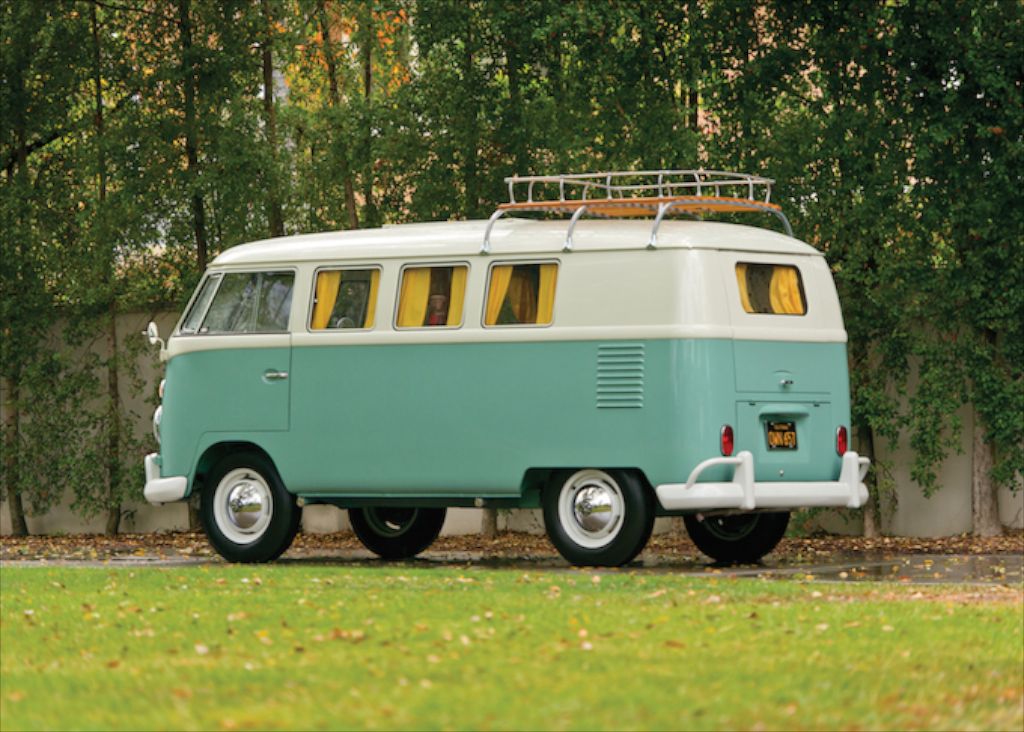Editor’s Note: Thanks to RM Auctions for permitting Monterey Car Week to publish this superlative VW Type 2 Westfalia Camper article. The VW will be up for bid at the RM Auctions event in Arizona January 2015.
Photo Credit: Robin Adams ©2015 Courtesy of RM Auctions
40 hp, 1,285 cc OHV air-cooled horizontally opposed four-cylinder engine with a Solex carburetor, four-speed synchromesh manual transmission, independent front suspension with transverse torsion bars and upper and lower radius arms, swing axle rear suspension with trailing arms and torsion bar, and four-wheel hydraulic drum brakes. Wheelbase 94.5 in.
- No-expense-spared, show-winning restoration by marque expert Doug Denlinger
- Restoration commissioned by Bruce Weiner
- Displayed in his world-famous Microcar Museum
- Fitted with all available Westfalia Camper options
- Only 2,534 miles since restoration; ready for adventure
The Volkswagen Transporter debuted at the 1949 Geneva Auto Show, and by the time production ended in Brazil in December 2013, more than nine million had been built. They were known as the Bulli in Germany and were produced in air-cooled, and later water-cooled, wasserbus variations, before the arrival of the front-engine Eurovan in 1993.
The first generation, or “split-window,” Transporter was named for its two-piece windshield. It was produced from 1950 to 1967 and was first sold in the U.S. in 1952. The original 1,131-cubic centimeter, 25-horsepower unit was enlarged to 1,192 cubic centimeters in 1953 and increased to 1,285 cubic centimeters and 40 horsepower in 1959. A full synchromesh transmission was fitted in 1959, and the one-millionth Transporter was sold in 1962.
The best-known Type 2 models are the Kombi and Samba people-movers, but there is also a dizzying selection of commercial variations. Volkswagen “buses” served as ambulances, police cars, hearses, crane trucks, fire trucks, campers, and even railroad speeders. Doors could be ordered on one or both sides, with the panel van offering as many as nine doors, for loading and unloading in narrow streets. The Volkswagen Pickup arrived in 1952, and crew-cabs with a shorter five-foot bed appeared in 1957.
The Volkswagen Microbus, which was launched in 1961, was one of the earliest vehicles to be offered as a camper from the factory. Westfalia-Werke was responsible for converting the microbus into a camper, which became known as simply the “Westfalia.” It was promoted as “the handiest, handsomest motorized house you could possibly wish to enjoy” and was equipped with two upholstered bench seats that converted into a bed, a front seat that could sleep children, a wardrobe, storage space, and a specially designed tent to increase the living area.
The Westfalia, known as the SO, for sonderausfuhrungen (special equipment), made the Microbus into a perfect vehicle for camping or long trips. Two models were available through 1965, the SO-34 and the SO-35. The SO-34 has a laminated white interior, while the SO-35 featured finished wood.
This particular Westfalia Camper is an SO-35, and it features birch plywood interior panels and cabinetry, a laminated folding table, and bright plaid canvas seats with matching yellow curtains. Also included with the camper are a child’s hammock and a factory accessory awning. The bus is equipped with all optional equipment, including a hatch-top roof for stargazing, opening front “safari windows” to cool the occupants, and a luggage rack for extra baggage.
Most importantly, this 1962 Westfalia Camper received a no-expense-spared restoration by marque specialist Doug Denlinger, which was commissioned by Microcar Museum owner Bruce Weiner for his museum. In keeping with Mr. Weiner’s standards, the body panels are perfectly straight and the wood cabinetry looks like new. The camper features a four-speed manual transmission, a factory Blaupunkt radio, an original luggage rack, a sub-hatch roof, plaid rear seats, wood cabinetry, a factory-optional tent, a table, and vast storage space. The Blue White and Turquoise two-tone paint is nearly flawless, and the bus has seen minimal use, with only 2,534 miles recorded since its restoration.
In keeping with tradition, this bus would be perfect for cross-country camping trips, or even the traditional One Lap of America. This spectacular Camper is also suitable for display in a museum or collection, but it would be far more fun to use as originally intended.















